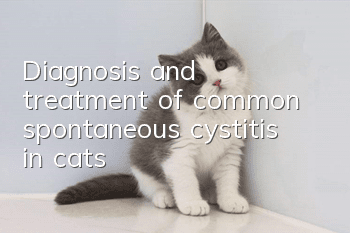Why do cats get carsick and how can we prevent them from getting carsick?

Carsickness is a very common problem in cats, unlike many dogs who can ride comfortably in cars. Cats have a more difficult time overcoming anxiety about riding in cars. Especially cats that don’t go out often. They only travel 2-3 times a year, so they will be highly nervous when riding in a car. In addition, the continuous movement of the vehicle and the noise of the engine may also disturb the cat and cause motion sickness.
Symptoms of motion sickness:
· Lethargy and listlessness
· Keep licking your lips
·Excessive drooling
· Vomiting, diarrhea
· Pacing, shaking, anxious, restless
Causes of motion sickness:
The main reasons why cats are prone to motion sickness are the same as humans. It's the feeling when what we see visually is different from what we feel in our inner ear (the innermost part of our ear, a highly sensitive area responsible for hearing and balance). Just as motion sickness is more likely to occur in children, young cats are more likely to develop motion sickness than adults. This is because their inner ear structures are not fully developed, but one possibility is also due to a lack of travel experience. Unaccustomed to being in a car, they sense different signals sent to their brains by their glasses and inner ears.
In addition, another reason why cats get motion sickness may be emotional. They automatically associate the car with going to the hospital, causing anxiety and symptoms of motion sickness.
Prevention of motion sickness:
For individual cats, motion sickness is something that cannot be completely avoided. The best way we can help them is to get them used to staying in their own travel boxes. You can place the crate in his favorite sleeping spot and use toys and treats to familiarize him with the space. When the suitcase can give it a full sense of security, let it get used to the space in the car step by step.
In addition, we can also try these methods to help them reduce motion sickness symptoms:
1. Do not eat within 4 hours before going out: fasting can help reduce gastrointestinal nausea symptoms and reduce the frequency of going to the toilet. Especially on long road trips. If the trip takes more than 4 hours, be sure to prepare cat litter and a toilet.
2. Keep the car cool and quiet: play soft classical music. Maintain ventilation and appropriate temperature in the car.
3. Make the surroundings feel like home:You can put some clothes from home or a blanket in your cat’s suitcase to make it smell like home~
4. Distract its attention: Provide toys and snacks that it is very interested in and only appear when traveling. This can help the cat divert its attention and calm down.
5. Frequent rest: When a cat has motion sickness, you can take it out of the car for a walk. Breathing fresh air can help relieve the symptoms of nausea.
6. Medication: Just like people, there are medications that can help pets cope with motion sickness. Their anxiety and motion sickness can be treated with appropriate medication in consultation with your veterinarian.
Note: Do not leave your cat alone in the car. Even on cloudy days, the temperature inside the car will rise rapidly, easily causing heatstroke.
- What should cats pay attention to when drinking water?
- European shorthair cat personality traits
- How to determine if your cat is pregnant?
- What to do if a Himalayan cat coughs
- Introduction to common diseases of American shorthair cats, shorthair cat care!
- Are you still troubled by cat ear mites? How to prevent and treat cat ear mites!
- Why does a cat cry like a baby?
- Introduction to the feeding knowledge and living habits of pastoral long-haired cats
- Why are Sphynx cats hairless? Introduction to Canadian Hairless Cats
- What is the function of a cat’s claws?



